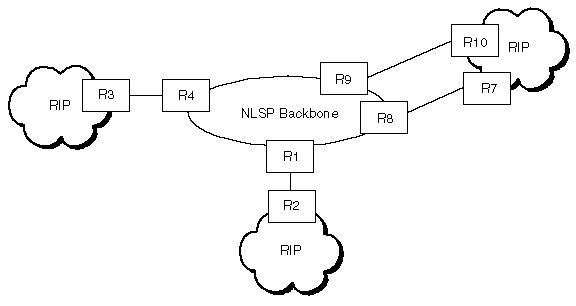

  |
IPX Route Aggregation enables you to introduce routes learned through RIP into an NLSP backbone in a summarized form. Route aggregation compactly describes many IPX network numbers simultaneously by using an address and mask pair. For example, all addresses from C9000000 to C9FFFFFF can be represented using the address C9000000 and the mask FF000000.
Figure 6 shows a typical topology for using route aggregation, a backbone network with several RIP areas attached. In Figure 6 , the information within the backbone is minimized by having routers R1, R4, R8, and R9 report address summaries for the attached areas. In this scenario, the default route is the only information about reachable external addresses that must be transmitted within an attached area. Therefore, information within the attached areas is minimized.
Figure 6
Aggregated Routes Topology
For more information about IPX route aggregation, refer to:
  |